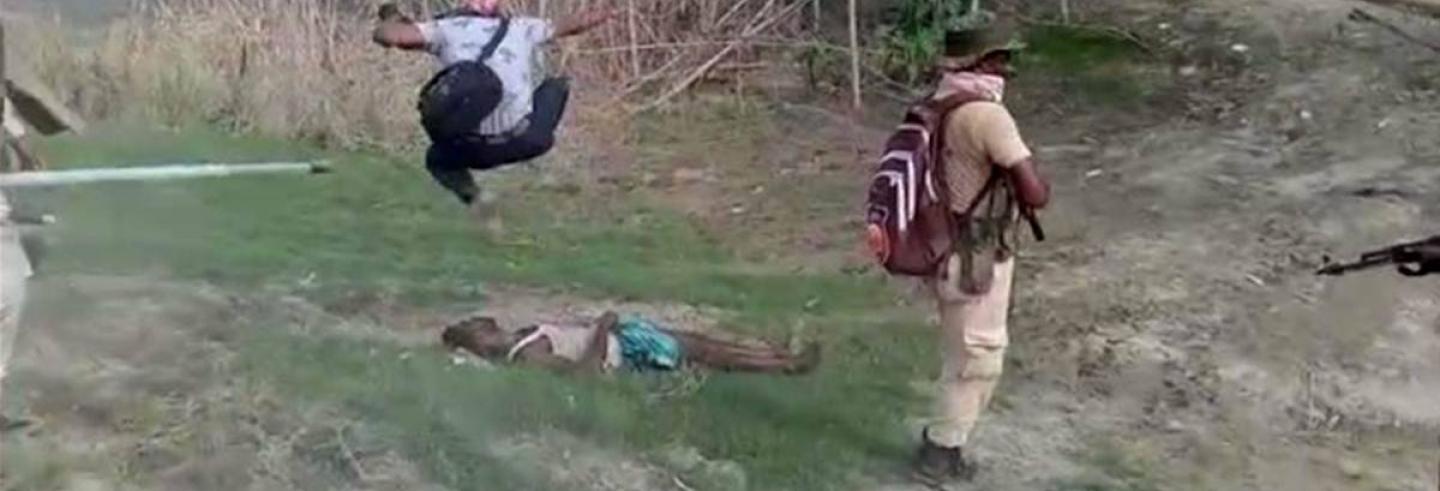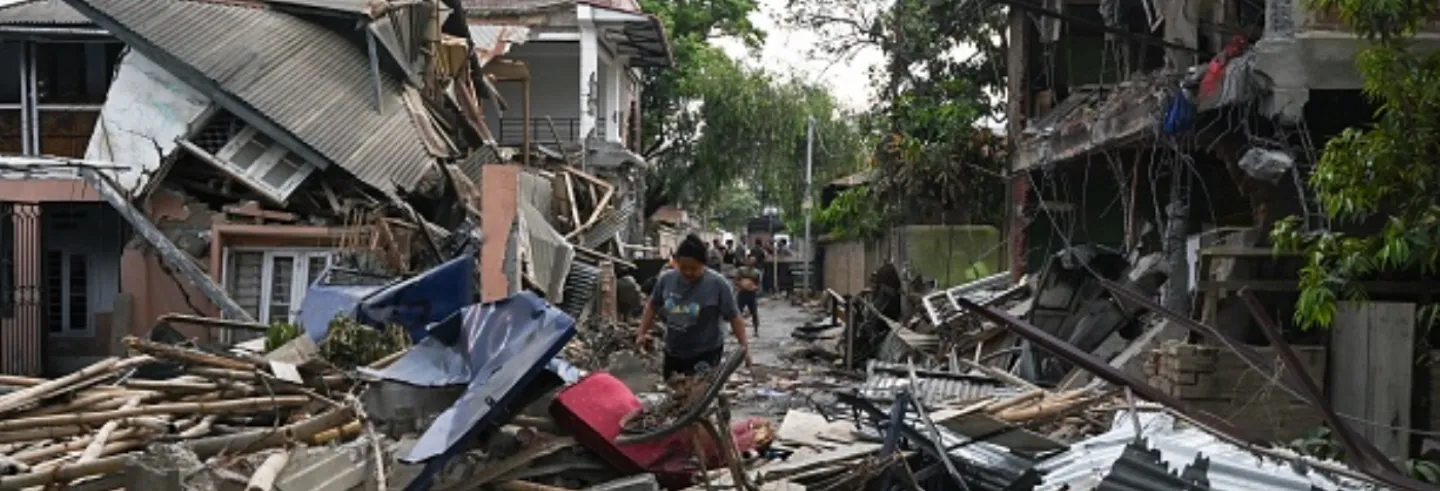It took an image. Two women, stripped naked, being led into a field that promised violence. The video went viral last week, over two months after it was filmed on 4 May in Manipur’s Kangpokpi district. It stirred a largely indifferent national public into outrage, which finally elicited a response from Delhi.
After 77 days of pointed silence on the turmoil that has riven the state, Prime Minister Narendra Modi declared that “humanity has died in Manipur.” Other responses from the government, both at the centre and in the Bharatiya Janata Party-ruled state, ran on similar lines. Union minister Smriti Irani tweeted about the “inhuman” assault on the women in the video. Manipur Chief Minister N. Biren Singh called it a “crime against humanity.”
The law, they vowed, would be swift and unsparing. And indeed it has been. A first information report filed in the aftermath of the incident gathered dust for two months. Within a few days of the video going viral, a number of arrests were made. The Supreme Court itself promised to take action on the videos if the government did not do so. At the same time, the centre directed social media platforms to quietly retire the video, claiming it threatened public order in Manipur.
Others have argued that the video of the assault, shared over and over again, only magnified the trauma borne by the women.
Either way, it took an image. The horror of the video has meant much of the national conversation now revolves around the humanitarian crisis in Manipur. It has also enabled the government to project its actions as a humanitarian response.
But the justice promised in this case cannot stand in for a credible political response to the conflict in Manipur.
To react to visual fragments of a conflict […] only addresses the effects of war and not the war itself.
To observers who have not tracked the long and tangled conflict, the two women could have been anyone, carried off to a field that could have been anywhere. Most would have reacted to a visceral human experience, made so immediate by the video. But what does it mean to react to visual fragments of a conflict?
Graphic images of war, writes sociologist Patricia Ticineto Clough, are meant to evoke empathy and compassion, laced with shame and disgust. These are pictures promising a “raw and intimate” experience of conflict, a sense of “that could be me.” This, in turn, becomes an appeal for a humanitarian response. But such a response only addresses the effects of war and not the war itself, Clough argues. By managing the effects, it often allows the war itself to continue endlessly.
By focusing on the very particular – on limbs, skin, scars – we may lose sight of the individual subjects who bear them, of the political and social contexts to which they belong.
The two women in the video were Kuki, a tribal community that lives in the hills of Manipur, a minority in the state. They were taken to a field in Kangpokpi district, which has traditionally been Kuki dominated. The mob that carried them off was Meitei, a majority in Manipur and largely based in the Imphal valley. The two communities have waged war against the Indian state for decades, demanding their own ethnic homelands. So have Naga tribes, many of whom live in the hills of Manipur. They have also been at war with one another, as the map of their homelands overlap.
The state responded by imposing the Armed Forces (Special Powers) Act on Manipur, which empowered security forces to unleash vast and unaccounted violence on all communities in Manipur. In the early 2000s there was another powerful image from Manipur – of Meitei women standing naked in front of the Kangla Fort in Imphal to protest against the army’s actions.
Ethnic tensions periodically boil over on the question of land. The hills are considered tribal lands […] Meiteis have long resented this arrangement.
While state and militant violence has receded over the years, ethnic tensions periodically boil over on the question of land. The hills are considered tribal lands, the preserve of the Naga and Kuki-Zo tribes who live there. They also enjoy certain administrative autonomies within the state government, exercised through a hill areas committee. Meiteis have long resented this arrangement, claiming to be hemmed into the Imphal valley, which has grown more populous with waves of migration.
From time to time, the Meitei-dominated state government has tried to dilute tribal protections in the hill areas, giving rise to protests.
The current round of violence began after a court ruled in April that Meiteis may also be eligible for Scheduled Tribe status. But tensions had been brewing even before that. The state government has made incursions into the hills over the past year, converting tribal land into forest reserves despite local protests and launching a determined ‘war on drugs’ that seemed to be directed at Kukis.
When the civil war in neighbouring Myanmar pushed refugees into Manipur, it activated one of the region’s oldest fears: of indigenous populations being overrun by so-called illegal immigrants. Earlier, this had been directed at Bengali-origin Muslims who live in Manipur and other North Eastern states. But the refugees from Myanmar are ethnically similar to Kukis in Manipur, so the entire community suddenly found itself being branded ‘illegals’, ‘infiltrators’, ‘encroachers’.
What does it mean when the majority community speaks the same language as the state government as it attacks minorities?
Both Kukis and Meiteis have been killed and displaced since May but reports suggest the majority of the victims were Kuki. While the state government has accused Kuki militants and ‘external forces’ of inciting violence, many of the marauding mobs were reportedly Meitei militias with links to the ruling party. Questions have also been raised about the role of the administrative machinery, which seems to have remained passive as weapons were looted from security camps and armouries.
The assault on the women in the video was a failure of humanity. But there are several other failures, not immediately visible. How was the mob able to capture the women and their relatives from police custody, as alleged? Why did the police, and by all accounts the National Commission for Women, take no action until the video went viral? What does it mean when the majority community speaks the same language as the state government as it attacks minorities?
There are other questions that may be asked of the video. What exactly constitutes a Scheduled Tribe? Who should be considered indigenous to a place? How far back in time do people need to travel in the search for indigeneity? Is there a politics that reconciles the competing claims instead of pitting them against one another?
The video from Manipur recalls another video that circulated on social media almost two years ago. In that video, Moinul Haque, a resident of Assam’s Sipajhar district, armed only with a stick, can be seen rushing towards a group of policemen. Within seconds, he is shot. Then, a government photographer accompanying the police is seen pouncing on his motionless body.
Haque’s killing did not stop eviction drives in Assam, powered by the majoritarian rhetoric that Bengali-origin Muslims were ‘illegal Bangladeshis’.
The incident took place during one of the Assam government’s demolition drives, said to liberate state land from so-called ‘illegal encroachers’. In most cases, the demolitions targeted a particular community – Muslims of Bengali origin. Haque was desperately trying to save his home when he was killed.
In the wake of outrage generated by the video, the photographer was arrested. Policemen and district officials were later booked for the murder as well.

But Haque’s killing did not stop eviction drives in Assam, powered by the majoritarian rhetoric that Bengali-origin Muslims were ‘illegal Bangladeshis’ who must therefore be encroaching on whatever land they lived on. Thousands have been displaced. Several others have died off camera. Last week, forest officials shot at people they claimed were violent encroachers, killing a woman and injuring others.
Manipur’s current turmoil has thrown up a litany of horrors. A middle-aged woman with mental health problems allegedly shot and disfigured. A man beheaded and his severed head paraded on a staff. A child and two women burnt alive in an ambulance. By the chief minister’s own admission, there have been hundreds of cases of rape, assault, and murder.
Will the outrage generated by the Manipur video ensure justice in all these cases and prevent more such incidents in future? Public reactions to the video cannot stop with empathy. They must prompt further questions about the hate and the political failures that made such violence possible.
Ipsita Chakravarty is a writer who lives in Kolkata. This article was first published in Scroll.in and is being republished here with permission.









